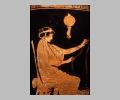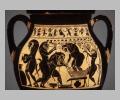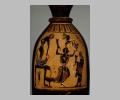This text is part of:
View text chunked by:
Berlin inv. 31426 [Vase], Clothing on vases, References to clothing
2 Olynthus, House A iv 9 [Building], Olynthus, House A v 10 [Building]
3 London B 507 [Vase], Berlin F 2294 [Vase], Louvre Ma 769 [Sculpture], References to foundries
4 Potters on vases, Other references to potters and pottery
5 Perseus Encyclopedia entry for Lysias, Lys. 12.4, Lys. 12.10, References to Lysias
6 Greek dictionary entry for metic, Xen. Ways 2.1, References to metics
7 Würzburg L 265 [Vase]
Tampa 86.15 [Vase]Ann Arbor 70.1.1 [Vase]Wine on vases, References to wine9 Piraeus [Site], Paus. 1.1.2, Thuc. 1.93.3, Architecture in Piraeus, References to Piraeus
10 Thuc. 1.107-108, Plut. Cim. 13.7, Xen Hell 4.8.9-12, Athens [Site]
11 Athenian coins, Dewing 1620 [Coin], Athens, Mint [Building], References to silver










